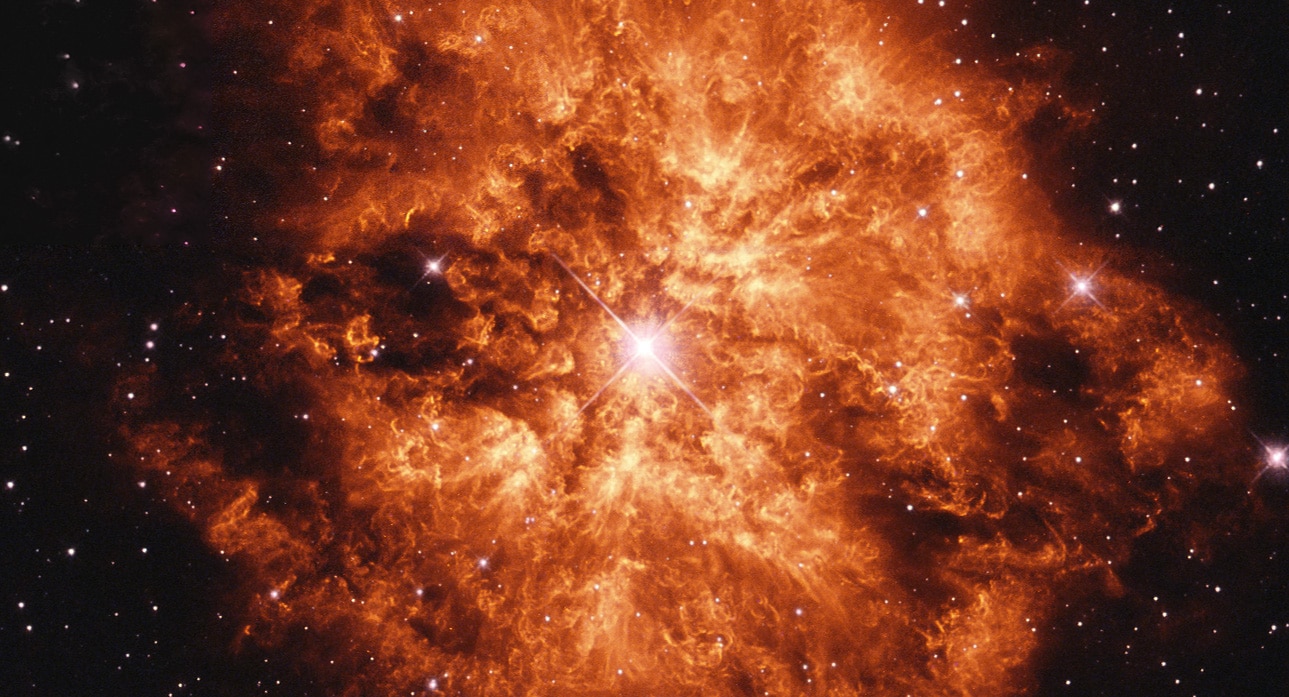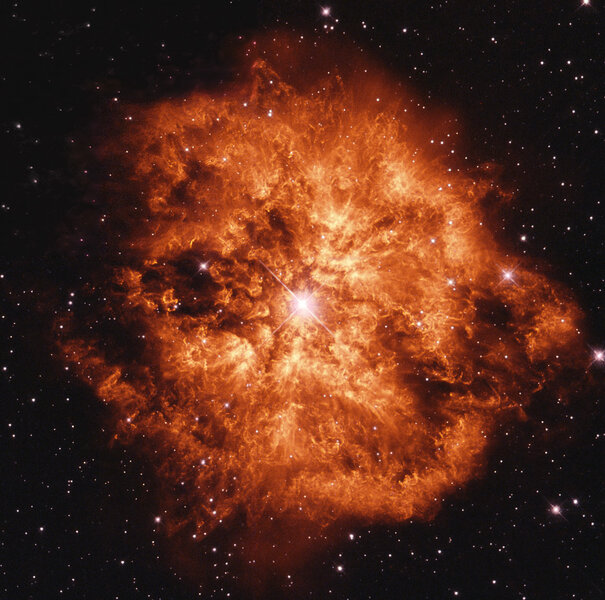Create a free profile to get unlimited access to exclusive videos, sweepstakes, and more!
A massive, violent star blooms

Even before I was a professional astronomer, I had a fascination with over-the-top astronomical objects. Black holes, supernovae, colliding galaxies … the bigger the bang, the better.
And that’s why I love Wolf-Rayet stars.
These are monsters, from a dozen to several dozen times the mass of the Sun. The mass of the star is the key factor in how luminous it is; the amount of energy a normal star emits increases faster than the cube of the mass. That’s a steep relation. A normal star with 10 times the Sun’s mass is 5,000 times brighter than the Sun, and one with 20 times the mass can be 50,000 times as energetic!
But that’s for normal stars. Wolf-Rayet stars (or WR stars for short) are massive, but they’re also evolved. That means that they’ve run out of hydrogen in their cores, and they’re now fusing helium into carbon, or carbon into oxygen. This produces a prodigious amount of energy, far more than normal stars do. WR stars can put out hundreds of thousands or even millions of times the energy the Sun does.
WR 124 is one such star, about 11,000 light-years from Earth. I’m rather glad it’s that far away, because it blows out well over 100,000 times the energy the Sun does; if you swapped out the Sun for WR 124, our entire planet would be burned to a crisp.
Like many WR stars, WR 124 is surrounded by a huge nebula called M1-67, a gas cloud roughly 6 light-years across. That’s 60 trillion kilometers, a vast distance. Despite that, the fierce light from WR 124 blasts through the gas, energizing it and causing it to glow (literally) like a neon sign.
It looks like a flower, doesn’t it? That gas used to be a part of the star! Its outer layers, actually, which got blown off in a wind, like a super-solar wind, when WR 124 ran out of hydrogen fuel in its core, having converted it all into helium (and energy). The core contracted, got very hot, and the outer layers responded by absorbing some of that energy and blowing off the star. The actual process is pretty complicated, but it’s likely this wind blew for some thousands of years. Then a faster but less-dense wind of particles got blown off the star, which caught up with and slammed into the previous wind.
This collision can cause all kinds of wonderful and fantastic shapes to be constructed in the gas. In the case of the nebula M1-67, it created all those little bow waves and streamers and knots you can see throughout the cloud. Measurements of the nebula expansion show that the bulk of it (from the initial wind) is moving at about 40 kilometers per second — that’s fast enough to cross the continental U.S. in two minutes. Given its size, that means the nebula is probably something like 20,000 years old.
Mind you, some of the clumps you see in it are being slammed by the faster wind, and are moving at well over 100 km/sec. This is causing turbulence and chaos inside the nebula. That much is obvious from the image.
It’s funny, I remember when Hubble first observed this nebula back in 1998. The image they released was pretty cool, for the time. But looking at it with modern eyes, it’s not quite as spectacular:
Again, mind you, when this was released it was a big deal. Hubble had only been up eight years, and for four of those it was taking fuzzy images due to the mirror being the wrong shape. Astronauts went up and swapped out cameras, replacing them with ones designed to counter the out-of-focus mirror, and the images we got back were hugely improved. This was one of them.
What I find funny is that the image I presented first is actually the same data. The difference is that now we have software and techniques that are way better at processing the data, cleaning it up, and presenting it in an appealing way. The first one above was done by Judy Schmidt, who is a whiz at taking Hubble images and turning them into masterpieces of art and beauty. (Note: The missing part of the image in the 1998 version is due to the layout of the detectors in that Hubble camera; data existed in that part of the image, but it’s not displayed. In her version, Schmidt filled in that space using that data to literally present a more complete picture.)
This is of some interest to me. There are a lot of Hubble images — a lot of space images from many different observatories and space probes — that are free and just sitting in archives. What treasures are out there, even ones we’ve seen before, but without the benefit of modern processing techniques? What spectacular observations of spectacular objects are still waiting for someone to present them to the world?
We’re at an amazing point in astronomical history when there are more people with more access to more data than ever before. I certainly hope — I know — that we will be seeing ever more images like M1-67, and our understanding and appreciation of the Universe will grow from them.




























